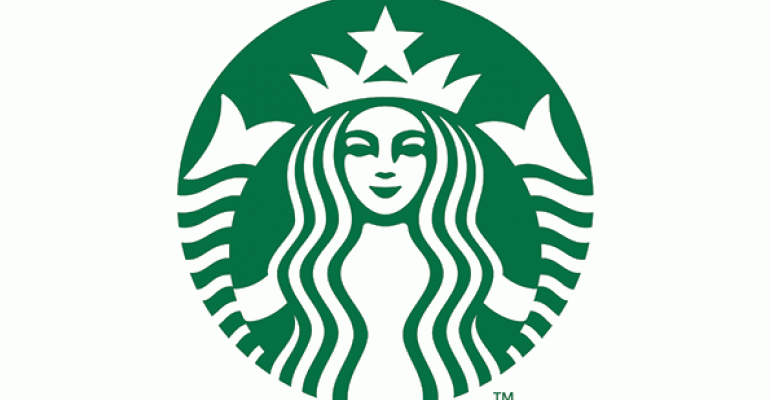Starbucks Corp., which has seen the use of mobile ordering and payment grow along with participation in its Rewards loyalty program, is adding suggested selling within its smartphone app this quarter, executives said Thursday.
The Rewards program changes are also linked to personalized offers that will be introduced this quarter, said Matthew Ryan, Starbucks executive vice president and global chief strategy officer.
“The past program only rewarded frequency,” Ryan said. “We couldn't reward any other behavior but that. We now have the opportunity, both in e-mail, which we've just begun, and this quarter, in our app, to do suggested selling. So we will be suggesting and making personalized offers within the context of our app that will allow people to see things that are right for them.”
Ryan said suggested selling on the app at the time of purchase will “drive the total customer sales.”
Scott Harlan Maw, Starbucks chief financial officer, added that the personalized offers will be for “relevant products based upon what you've ordered in the past, daypart, your preferences.”
After reporting third-quarter same-store sales growth of 4 percent that fell short of expectations, Howard Schultz, Starbucks chairman and CEO, said the period was an anomaly, and he was confident that the company would return to historic same-store sales growth above 5 percent.
Maw said the app updates give Starbucks confidence that fourth-quarter same-store sales increases will be 5 percent, and “accelerate as we go into 2017.”
In 24 years as a public company, Schultz said, Starbucks in the third quarter ended June 26 saw “a confluence of social and political turmoil at home, weakening consumer confidence, increasing global uncertainty and the launch of one of our most significant long-term initiatives of all-time.”
Starbucks changed its Rewards loyalty program in April to be based on dollars spent rather than transactions to eliminate what Schultz said called “a vexing in-store operating issue — order splitting.” The change, he added, has resulted in shorter lines, increased speed and reduced line attrition.
The Rewards program gained 300,000 net new members in the third quarter, to total 12.3 million in the U.S. and 19 million in the China/Asia Pacific region.
U.S. customers in the third quarter conducted 5 percent of all transactions on the mobile app, up a full percentage point from 4 percent the second quarter, the company said. At peak periods in some locations, the company said, as many as 20 percent of orders were through the mobile app.
But Schultz noted that the consumer environment could buffet the brand with headwinds.
“I think we have a situation where you have a very uncertain election,” he said. “You have domestic civil unrest with regard to race. And I think the issues around terror have created a level of anxiety. And so we're no longer looking at just an economic downturn. There are a number of things that we are facing as citizens, and I think the direction of the country.”
Schultz added that Starbucks executives “feel very strongly that what we offer our customers — the sense of community, the longing for human connection, a safe place, an affordable luxury and, obviously, the innovation that we have brought forth — gives us the confidence that we will be the kind of company and the kind of brand that will demonstrate to our customers the aspirational connection.”
Schultz also noted that Starbucks will further enhance its premium positioning rather than adopt discounting.
“We do not want to be in the business of buying business,” he said. “We do not want to discount or dilute the integrity of the brand. We know who we are. We know what our core purpose is. And we've got to play the long game and have faith and confidence in what we stand for in terms of the experience, the quality of the coffee.”
Starbucks will continue to add its new premium Roastery format in 2017, he said, which is a smaller format of the Starbucks Reserve model.
Starbucks third-quarter net income rose 20.3 percent, to $754.1 million, or 51 cents a share, from $626.7 million, or 41 cents a share, a year ago. Total revenue rose 7.3 percent, to $5.2 billion, from $4.9 billion in the same period last year.
Global same-store store sales increased 4 percent, including a 4-percent increase in the Americas, a 3-percent increase in the China/Asia Pacific region and a 1 percent decline in the Europe, Middle East and Africa area.
Starbucks opened 474 net new units worldwide in the third quarter, bringing its total to 24,395 locations in 74 countries.
Contact Ron Ruggless at [email protected]
Follow him on Twitter: @RonRuggless




